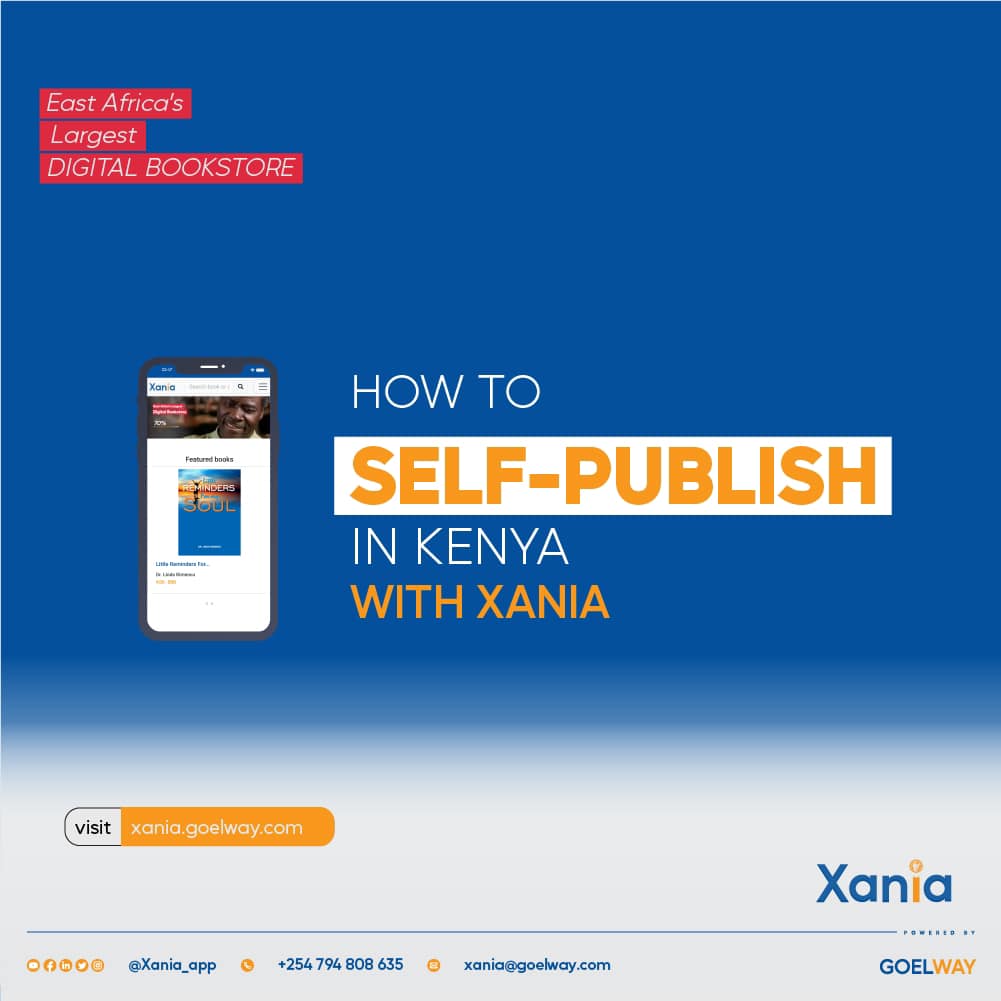Getting out of debt faster isn’t just about saving money on interest – it’s about reclaiming your financial freedom. If you’re carrying personal loans from mobile lenders, banks, or SACCOs in Kenya, this comprehensive guide will show you proven strategies to pay off your debt ahead of schedule while avoiding common pitfalls that trap many Kenyan borrowers.
Whether you’re dealing with high-interest mobile loans from platforms like Tala or Branch, bank personal loans, or SACCO borrowing, the strategies in this guide have helped thousands of Kenyan borrowers reduce their debt burden by months or even years.
Why Pay Off Personal Loans Early in Kenya?
The mathematics of early loan repayment in Kenya’s high-interest environment are compelling. Consider this example: if you have a KES 100,000 personal loan at 20% annual interest over 3 years, paying it off just one year early saves you approximately KES 15,000 in interest payments. For mobile loans with rates exceeding 100% APR, the savings become even more dramatic.
Beyond the financial benefits, early repayment protects you from Kenya’s strict Credit Reference Bureau (CRB) reporting system. Late payments can blacklist you for years, making it nearly impossible to access formal credit when you need it most.
See Table of Contents
- Why Pay Off Personal Loans Early in Kenya?
- Understanding Your Loan Landscape in Kenya
- The Power of Payment Frequency: Your First Quick Win
- The Kenyan Debt Prioritization Framework
- Best Loan Consolidation Strategies for Kenyan Borrowers
- Income Optimization: The Kenyan Side Hustle Advantage
- Advanced Repayment Tactics: Maximizing Every Shilling
- Leveraging Technology and Financial Tools
- Negotiation and Settlement Strategies
- Building Your Emergency Buffer
- Common Mistakes to Avoid
- From KES 500,000 to Debt-Free in 18 Months
- Debt Repayment & Your Mental health
- Looking Beyond Debt Freedom
- Regulatory Support and Consumer Protection
- Your Next Steps: Creating Your Personal Action Plan
- Conclusion: Your Path to Financial Freedom
Understanding Your Loan Landscape in Kenya
| Loan Type | Typical Interest Rate (APR) |
|---|---|
| Mobile & Digital Loans (Tala, Branch, Timiza, KCB M-Pesa) | Often >100% APR (daily compounding) |
| Bank Personal Loans (Equity, KCB, Co-operative Bank) | 14.5% – 18% APR (varies by bank and borrower risk) |
| SACCO Loans (Stima SACCO, Kimisitu SACCO) | 12% – 18% APR |
| Logbook & Asset-Backed Loans | 20% – 35% APR |
Before diving into repayment strategies, you need to understand what you’re working with. Kenya’s lending ecosystem includes several distinct categories, each requiring different approaches:
- Mobile and Digital Loans (Tala, Branch, Timiza, KCB M-Pesa) typically carry the highest interest rates, often exceeding 100% APR when calculated annually. These loans compound daily and require immediate attention in any repayment strategy.
- Bank Personal Loans from institutions like Equity, KCB, or Co-operative Bank typically range from 15-24% APR and offer more structured repayment terms. These loans often have prepayment penalties that you’ll need to factor into your calculations.
- SACCO Loans from organizations like Stima SACCO or Kimisitu SACCO typically offer the most favorable rates, ranging from 12-18% APR, making them excellent consolidation options.
- Logbook and Asset-Backed Loans occupy a middle ground, with rates typically between 20-35% APR but with the added risk of asset forfeiture if you default.
The Power of Payment Frequency: Your First Quick Win
One of the most powerful yet underutilized strategies for Kenyan borrowers is changing your payment frequency. Instead of making monthly payments, switch to bi-weekly or weekly payments aligned with your income cycle.
Here’s how this works mathematically: if your monthly payment is KES 12,000, paying KES 6,000 every two weeks results in 26 payments per year instead of 12. This effectively adds one extra month’s payment annually without straining your budget.
For a KES 300,000 loan at 18% interest over 5 years, switching to bi-weekly payments reduces your loan term by approximately 18 months and saves you over KES 65,000 in interest. This strategy works particularly well for salaried employees who receive bi-weekly or weekly payments.
Many Kenyan lenders, including KCB M-Pesa and several SACCOs, now offer flexible payment scheduling through their mobile platforms, making this strategy more accessible than ever.
The Kenyan Debt Prioritization Framework
Not all loans are created equal, especially in Kenya’s diverse lending landscape. You need a systematic approach to decide which loans to tackle first.
The Avalanche Method
The avalanche method focuses on interest rates and delivers maximum financial benefit. List all your loans by interest rate, from highest to lowest. Make minimum payments on all loans, then channel every extra shilling toward the highest-rate debt.
For example, if you have a KES 50,000 mobile loan at 120% APR and a KES 150,000 bank loan at 18% APR, attack the mobile loan first. Eliminating that high-interest debt saves you approximately KES 60,000 in annual interest charges.
The Snowball Method
The Snowball method prioritizes psychological momentum by targeting the smallest balances first. While mathematically suboptimal, this approach works well for borrowers who need motivation to stick with their repayment plan.
Consider Jane, a teacher from Nakuru, who used the snowball method to eliminate five different mobile loans totaling KES 85,000. By clearing the smallest loan first (KES 8,000 from Tala), she freed up mental energy and cash flow to tackle larger debts systematically.
The key is choosing one method and sticking with it consistently. Many Kenyan borrowers make the mistake of switching between approaches, which dilutes their progress.
Best Loan Consolidation Strategies for Kenyan Borrowers
Debt consolidation can be a game-changer, but only if done strategically. In Kenya, your best consolidation options typically come from SACCOs rather than banks or specialized consolidation companies.
SACCO Consolidation Loans
offer rates as low as 12% APR, dramatically lower than mobile lenders or most bank personal loans. If you qualify for SACCO membership (many have relaxed requirements), a consolidation loan can cut your interest burden by 70% or more.
For instance, consolidating KES 400,000 in various mobile and bank loans averaging 45% interest into a single SACCO loan at 15% reduces your annual interest from KES 180,000 to KES 60,000 – a savings of KES 120,000 per year.
Bank Consolidation Options
include personal loans specifically designed for debt consolidation. While rates are higher than SACCOs (typically 18-24%), they’re still significantly lower than mobile lenders and often come with longer repayment terms.
The consolidation process requires discipline. Many Kenyan borrowers make the mistake of running up new debt after consolidating, leaving them worse off than before. Before consolidating, commit to closing high-interest credit lines and avoiding new debt.
Income Optimization: The Kenyan Side Hustle Advantage
Kenya’s vibrant informal economy offers numerous opportunities to generate additional income specifically for debt repayment. The key is channeling 100% of side hustle income toward loans rather than lifestyle inflation.
- Digital Opportunities include freelance writing, graphic design, and virtual assistance through platforms like Upwork or Freelancer. Many Kenyan professionals earn KES 20,000-50,000 monthly from freelance work during evenings and weekends.
- Physical Side Hustles remain robust in Kenya’s economy. Ride-hailing through Uber business or Bolt, weekend retail through platforms like Jiji or Facebook Marketplace, and food delivery services can generate substantial additional income.
- Agricultural Ventures shouldn’t be overlooked. Even urban dwellers can engage in container farming, poultry keeping, or seasonal crop trading. A small poultry operation can generate KES 15,000-25,000 monthly profit with minimal startup capital.
The critical success factor is treating side hustle income as “debt repayment money” rather than discretionary spending money. Open a separate M-Pesa or bank account specifically for side hustle earnings and loan payments.
Advanced Repayment Tactics: Maximizing Every Shilling
Payment Rounding Strategy: Round up every payment to the nearest hundred or thousand shillings. If your loan payment is KES 13,450, pay KES 14,000 or even KES 15,000. This small change directs extra money straight to principal reduction.
Over time, these rounded payments compound significantly. For a KES 200,000 loan, consistently rounding up payments by just KES 1,000 monthly can reduce your loan term by 8-12 months.
Windfall Allocation: Designate specific percentages of unexpected income for debt repayment. Whether it’s a bonus, tax refund, or gift, commit to using at least 75% for loan reduction. Many successful Kenyan debt-freedom stories involve strategic use of windfalls rather than lifestyle spending.
Expense Auditing: Use your M-Pesa and bank statements to identify spending leaks. Many Kenyan consumers are surprised to discover they’re spending KES 5,000-10,000 monthly on unnecessary subscriptions, impulse purchases, or convenience fees.
Redirect these discovered funds immediately to loan payments. Even KES 3,000 monthly in expense reduction can accelerate loan repayment by 6-8 months on a typical personal loan.
Leveraging Technology and Financial Tools
Kenya’s fintech revolution provides powerful tools for debt management that didn’t exist just a few years ago.
- Loan Calculators and Apps: Platforms like Mwananchi Credit offer free calculators that show exactly how extra payments impact your loan timeline. Spend time modeling different scenarios to find the optimal payment strategy for your situation.
- Automated Payment Systems: Set up automatic transfers from your salary account to loan payments. KCB, Equity, and Co-operative Bank all offer robust automated payment systems that ensure you never miss a due date.
- Budget Tracking Apps: Mobile apps like PesaKit or even simple Excel spreadsheets help track every shilling coming in and going out. The visibility alone often motivates better financial decisions.
- SACCO Mobile Banking: Many SACCOs now offer sophisticated mobile platforms that integrate savings, loans, and investment tracking. These tools make it easier to see your complete financial picture and make strategic decisions.
Negotiation and Settlement Strategies
Don’t underestimate the power of direct negotiation with lenders, especially if you’re experiencing financial hardship or can offer lump-sum payments.
Hardship Negotiations: If you’re struggling with payments, contact your lenders proactively. Many Kenyan lenders, under Central Bank guidelines, prefer restructuring loans rather than dealing with defaults. You might secure reduced interest rates, extended terms, or payment holidays.
Settlement Offers: If you have access to a lump sum (perhaps from asset sales or family assistance), many lenders will accept reduced payments to close loans immediately. A settlement of 70-80% of the outstanding balance is often accepted, especially for high-risk mobile loans.
Professional Mediation: Consider working with debt counselors or financial advisors who understand Kenya’s lending landscape. The Kenya Association of Financial Advisors maintains a directory of qualified professionals who can negotiate on your behalf.
Building Your Emergency Buffer
One crucial element many debt repayment guides overlook is emergency fund building. Without a financial buffer, unexpected expenses force you back into high-interest debt, undermining your progress.
Aim to build a KES 30,000-50,000 emergency fund while paying off debt. This might seem counterintuitive when you’re paying high interest rates, but it prevents debt cycling – the pattern where you pay off loans only to immediately borrow again for emergencies.
SACCO savings accounts work well for emergency funds because they often earn 6-10% interest while remaining accessible. Some SACCOs even offer overdraft facilities against savings, providing emergency access without high-interest loan applications.
Common Mistakes to Avoid
Learning from others’ mistakes can save you months of setbacks in your debt repayment journey.
Prepayment Penalty Oversight: Always calculate prepayment penalties before paying off loans early. Some lenders charge up to 3% of the outstanding balance for early repayment, which might eliminate the interest savings from early payment.
Debt Cycling: Many Kenyan rob peter to pay Paul. Norrowers pay off one loan only to immediately take another for lifestyle expenses. This creates a cycle where you’re always carrying debt despite making payments.
Neglecting Credit Score Impact: Focus on maintaining perfect payment records even while aggressively paying down debt. Your CRB score affects future borrowing costs more than most people realize.
Single-Strategy Dependence: Relying exclusively on one approach (like side hustles) makes you vulnerable if that income source disappears. Diversify your debt repayment strategies across multiple approaches.
From KES 500,000 to Debt-Free in 18 Months
Michael, a software developer from Nairobi, successfully eliminated KES 500,000 in various loans using a systematic approach that illustrates these principles in action.
His debt portfolio included a KES 200,000 bank personal loan at 19% APR, KES 150,000 in mobile loans averaging 80% APR, a KES 100,000 logbook loan at 25% APR, and KES 50,000 in SACCO borrowing at 14% APR.
Michael started by consolidating his mobile loans into a single SACCO loan at 16% APR, immediately reducing his average interest rate from 52% to 18%. He then used the avalanche method, targeting the logbook loan next while making minimum payments on other debts.
To accelerate repayment, Michael launched a weekend web development service, generating an additional KES 35,000 monthly. He also analyzed his spending and found KES 8,000 in monthly expense reductions. Combined with payment rounding and bi-weekly payments, he eliminated all debt in 18 months instead of the original 4-year timeline.
The key to Michael’s success was treating debt repayment as a systematic project rather than hoping for quick fixes. He tracked progress monthly, adjusted strategies based on results, and maintained discipline even when facing setbacks.
Debt Repayment & Your Mental health
Successful debt repayment requires managing both the mathematical and emotional aspects of debt. Many Kenyan borrowers underestimate the psychological challenges of sustained debt repayment.
Motivation Maintenance: Create visual progress indicators, whether through mobile apps or simple charts. Seeing your debt balances decrease monthly provides powerful motivation to continue aggressive repayment.
Social Support Systems: Share your debt repayment goals with trusted family members or friends who can provide accountability and encouragement. Many successful debt elimination stories involve social support networks.
Celebration Milestones: Acknowledge significant progress markers, like paying off individual loans or reaching halfway points. Small celebrations reinforce positive financial behaviors without derailing progress.
Stress Management: Debt stress affects decision-making ability. Maintain perspective by focusing on progress made rather than remaining balances, and seek professional counseling if debt anxiety becomes overwhelming.
Looking Beyond Debt Freedom
As you approach debt freedom, start planning your post-debt financial strategy to avoid returning to problematic borrowing patterns.
Emergency Fund Expansion: Once debt-free, rapidly build your emergency fund to 6-12 months of expenses. This buffer prevents future debt cycling when unexpected expenses arise.
Investment Transition: Channel your former debt payments into sustainable investments rather than lifestyle inflation. A disciplined approach to investing the money you were previously paying toward loans creates long-term wealth building.
Credit Rebuilding: Maintain one or two small credit facilities with perfect payment records to build positive credit history. This ensures access to favorable borrowing terms for productive debt like business loans or mortgages.
Financial Education: Continue learning about personal finance, investing, and business development. The discipline that enables debt elimination also enables wealth building when properly directed.
Regulatory Support and Consumer Protection
Understanding your rights as a borrower in Kenya can provide additional leverage in your debt repayment journey.
The Central Bank of Kenya requires lenders to provide clear loan terms, reasonable collection practices, and opportunities for loan restructuring in cases of genuine hardship. Digital lenders must now comply with stricter regulations regarding interest rate disclosure and collection practices.
If you’re facing aggressive collection tactics or unclear loan terms, contact the Central Bank’s consumer protection unit or seek assistance from consumer advocacy organizations. You have rights that can be enforced even when dealing with informal or digital lenders.
Your Next Steps: Creating Your Personal Action Plan
Transform this information into action with a systematic approach tailored to your specific situation.
Start by listing all your debts with current balances, interest rates, and minimum payments. Use online calculators to model different repayment scenarios and choose the strategy that best fits your situation and personality.
Set up tracking systems, whether through mobile apps, spreadsheets, or simple notebooks. Consistent monitoring is crucial for maintaining momentum and making necessary adjustments.
Identify your first additional income source or expense reduction opportunity. Even small changes create momentum that builds over time.
Most importantly, commit to consistency over perfection. Missing one payment or falling short one month doesn’t derail your entire plan if you return to disciplined behavior immediately.
Conclusion: Your Path to Financial Freedom
Start today with one small step. Whether it’s setting up bi-weekly payments, listing all your debts, or identifying your first side hustle opportunity, the most important decision is to begin. Your future debt-free self will thank you for taking action now rather than waiting for perfect conditions that may never come.
Kenya’s debt crisis demands a multifaceted approach combining behavioral discipline, strategic repayment methods, and institutional support. Key recommendations include:
- Adopt the avalanche method for high-interest debt while using snowball tactics for psychological reinforcement.
- Consolidate debts through SACCOs or negotiated bank loans to reduce interest burdens.
- Leverage mobile and fintech tools for budgeting and automated payments to avoid defaults.
- Engage policymakers to expand access to low-interest refinancing options.
By integrating these strategies, Kenyan borrowers can achieve debt freedom while contributing to broader financial system stability.
This guide represents general financial education and should not replace personalized financial advice. Interest rates, loan terms, and lender policies change frequently in Kenya’s dynamic financial market. Always verify current terms with lenders and consider consulting qualified financial advisors for complex debt situations.
Share this guide with other Kenyans working toward debt freedom. Financial education benefits entire communities, and your success story could inspire others to take control of their financial futures.



